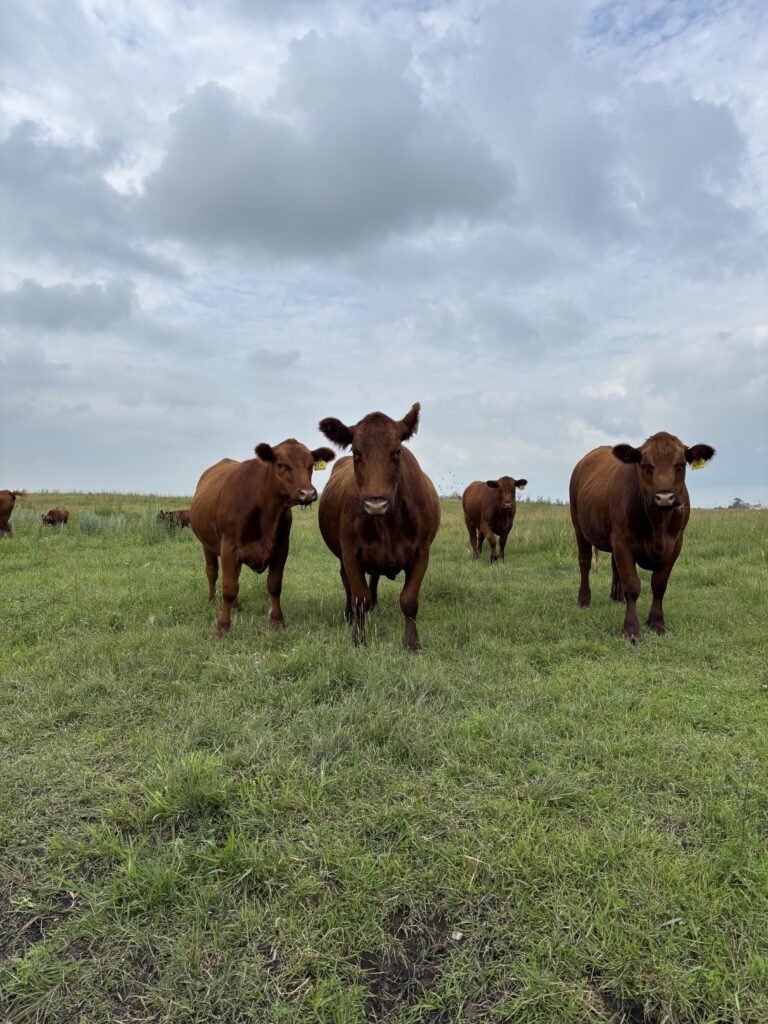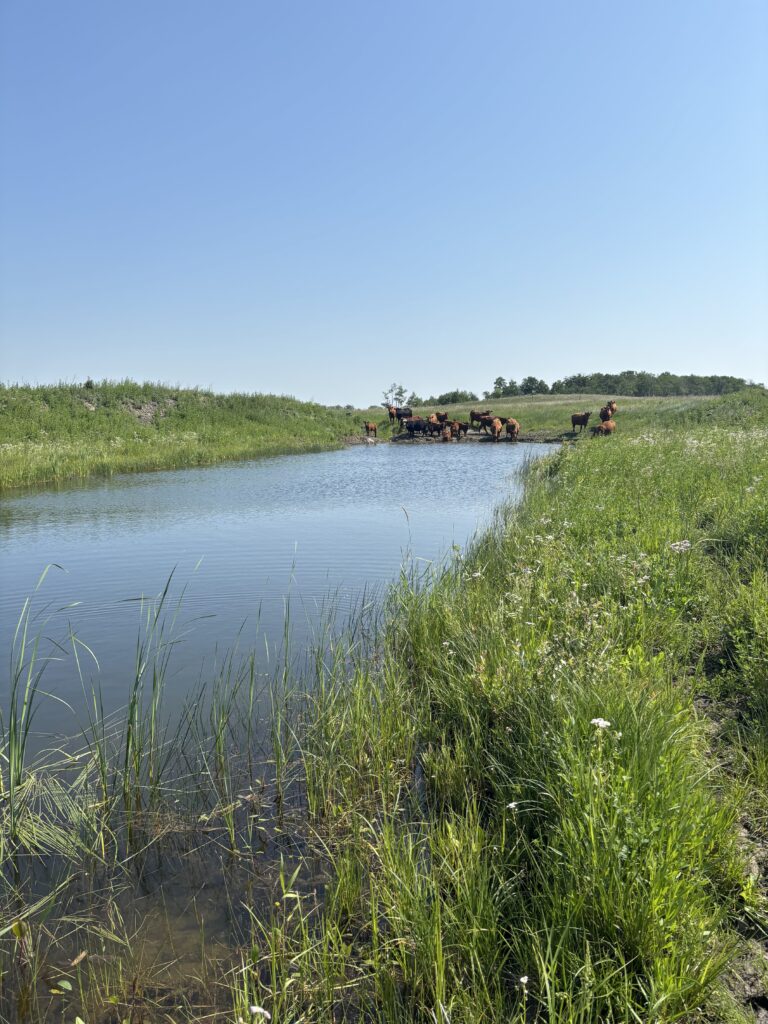Why conductivity matters for water quality and livestock health

This summer, I’ve had the opportunity to work in Dr. Kerri Finlay’s lab at the University of Regina. While I’ve contributed to several limnology surveys in the field, my main role has been to coordinate the Saskatchewan Water Rangers program by supporting volunteers. I’ve also been heavily involved in the Cow Kit program, where we sample 23 dugouts each month.
Again this year, through the Cow Kit program, we’re monitoring dugout water quality to ensure cattle and other livestock are accessing safe water. At the same time, we’re collecting data on the correlation between conductivity and sulfate levels in these dugouts. The goal is to create a Cow Kit that’s simpler than the typical Water Rangers kits—something farmers and ranchers can use to assess dugout water quality efficiently and cost-effectively to help keep their cattle healthy. We’ll be plotting and analyzing these data soon.
Working with water quality data and talking to producers has made me realize just how important it is to understand parameters like conductivity—and how they relate not only to water quality but also to livestock health.
Conductivity and water quality
Conductivity measures water’s ability to pass an electrical current. These measurements help us understand the amount of dissolved ions in the water—higher amounts of ions mean higher conductivity. Conductivity is influenced by the presence of substances like calcium, bicarbonate, nitrogen, phosphorus, iron, sulphur, sodium, magnesium, potassium, and other compounds.
In Saskatchewan, where soils tend to be quite saline, conductivity levels are typically high. Individual water bodies tend to have a relatively consistent range of conductivity, so regular testing is important to understand what’s “normal” for your site. That way, you can more easily notice sudden changes, which could indicate that something—like a contaminant—is seeping into the water.
For example, if sewage or runoff enters a water body, it can cause a large spike in conductivity. Gradual increases over the summer, however, are relatively normal. This is because evaporation outpaces precipitation during the hotter months, concentrating the dissolved ions.
Why conductivity measurements matter for livestock health
Conductivity correlates with sulfate concentrations—meaning that when sulfate levels rise, so do conductivity readings. Sulfates can be toxic to livestock at high concentrations, so conductivity measurements are a helpful indicator for livestock producers.
For more information on acceptable levels and the effects of high conductivity or sulfates on livestock, check out the Government of Saskatchewan’s page on livestock water quality.

Where do sulfates come from?
Sulfates can come from both natural and human-caused sources. Naturally, they may be present in soil, rock, or groundwater. Human-related sources include fertilizers, agricultural runoff, sewage discharge, and industrial activities like mining.
How to manage sulfate levels
Fortunately, there are ways to help reduce sulfate concentrations. These include dugout placement and good management practices—such as fencing out dugouts and maintaining riparian health.
When it comes to placement:
- Discharge dugouts, which collect groundwater, tend to be more saline with higher sulfate levels, as these compounds are leached from the soil.
- Recharge dugouts, which collect surface water from runoff or precipitation, usually have lower sulfate levels. These are best located away from potential sources of contamination, like fertilized cropland or manure storage areas.
Fencing can help improve both water quality and riparian health (the area surrounding a water body). Limiting livestock access to the water lets the riparian zone recover, encouraging vegetation growth. This vegetation acts as a buffer, filtering out unwanted substances before they enter the water. Fencing also reduces direct inputs like manure and urine and helps prevent soil erosion and sediment runoff—all of which can elevate sulfate levels if left unmanaged.

Wrapping Up
I’m incredibly grateful to be working in this lab this summer—I can’t believe there’s only one month left! I’ve had a lot of fun sampling dugouts. It’s always nice to see farm animals like cows, horses, and farm dogs, as well as the wildlife you come across in rural Saskatchewan.
It’s also been great getting to know landowners and hearing how much they care about their land, animals, and the quality of their dugout water. We even got to tour some farms and see how things operate firsthand. The volunteers in this program are truly amazing—one farmer even helped pull our truck out of the mud with a tractor!
There’s been a lot of variety and a lot of fun in both the lab and the field. When I’m not sampling dugouts or doing admin work, I’m either in the lab or out in a canoe or zodiac boat conducting limnological surveys. These surveys help monitor the health of various lakes across Saskatchewan and contribute to ongoing research into how lake parameters are changing over time.
It’s been an incredible experience.
References and resources
- Government of Saskatchewan. (n.d.-a). Dugout development and site selection tool for livestock watering.
https://www.saskatchewan.ca/business/agriculture-natural-resources-and-industry/agribusiness-farmers-and-ranchers/livestock/livestock-and-water-quality/dugout-creation-and-site-selection - Government of Saskatchewan. (n.d.-b). Livestock Water Quality.
https://www.saskatchewan.ca/business/agriculture-natural-resources-and-industry/agribusiness-farmers-and-ranchers/livestock/livestock-and-water-quality/livestock-water-quality - Wang, H., & Zhang, Q. (2019). Research advances in identifying sulfate contamination sources of water environment by using stable isotopes. International Journal of Environmental Research and Public Health, 16(11), 1914.
https://doi.org/10.3390/ijerph16111914
